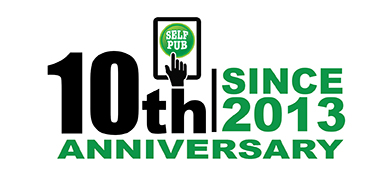Introduction
Welcome to the final post in our series on choosing the best premade book cover. In this post, we’ll explore the concept of a book cover being ‘close enough’ to your story. While it’s important for your cover to reflect the essence of your book, getting every minor detail perfect isn’t always necessary. Instead, focus on capturing the overall tone, genre, and appeal of your book. This post will help you strike the right balance between accuracy and practicality.
Understanding ‘Close Enough’
The Concept of ‘Close Enough’
The idea of ‘close enough’ is about finding a cover that captures the essence of your story without being a perfect match for every detail. It’s more important that the cover is compelling, genre-appropriate, and visually appealing than it is for it to precisely depict every character or scene.
Why ‘Close Enough’ Works
Readers often decide whether to pick up a book based on the cover’s overall appeal rather than its exact accuracy. A cover that broadly matches the genre and tone of your book will attract the right readers, even if it doesn’t perfectly represent every aspect of the story.
Practical Application of ‘Close Enough’
Scenario 1: Minor Character Details
Suppose you’ve found a brilliant premade cover that’s genre-appropriate, well-composed, and compelling. However, the heroine’s hair color on the cover doesn’t match your description in the book. Should you pass on the cover?
Solution: If the cover effectively captures the overall tone and genre of your book, it’s likely ‘close enough.’ Minor details like hair color can often be overlooked by readers, who are more interested in the story itself.
Scenario 2: Setting and Background
Imagine you’ve written a historical romance set in a lush countryside, but the perfect premade cover features a beach scene. Is this a deal-breaker?
Solution: While the setting is important, the key is to capture the romantic tone and genre. If the cover’s mood aligns with the story’s themes, it can still be a great choice. Additionally, some designers offer customization options to adjust minor elements like the background.
When to Seek Changes
Minor Edits
Many premade cover designers offer minor edits, such as changing hair color, eye color, or background details. These small adjustments can make the cover feel more personalized to your story without requiring a completely custom design.
Example: If the cover’s character has the wrong hair color, ask the designer if they can change it. These adjustments are often quick and affordable.
Major Edits
If you feel a cover is almost perfect but needs more significant changes, like altering the entire background or adding specific elements, it’s worth contacting the designer. Major edits can be more costly and time-consuming, but they can help achieve a closer match to your story.
Example: If you need to replace the modern cityscape with a medieval castle, discuss this with the designer. They can provide a quote for the extra work required.
Balancing Cost and Accuracy
Budget Considerations
Balancing your budget with the need for an accurate cover is crucial. While custom covers offer the most flexibility, they can be expensive. Premade covers with minor edits offer a cost-effective solution that still allows for some personalization.
Cost vs. Benefit
Consider the potential benefits of minor changes versus the costs. If a small edit significantly enhances the cover’s alignment with your story, it may be worth the investment. However, avoid over-investing in minor details that won’t significantly impact the cover’s overall appeal.
Real-World Examples
Example 1: The Compelling but Not-Quite-Perfect Cover
You’ve found a premade cover that’s genre-appropriate and visually stunning, but the model’s clothing isn’t historically accurate. The cover still captures the romantic and adventurous tone of your story.
Decision: Go for it. The overall appeal and genre alignment outweigh the minor inaccuracy. Readers are more likely to be drawn to the cover’s emotional and visual impact.
Example 2: The Almost Perfect Cover with Minor Flaws
You discover a premade cover that’s nearly perfect, but the character’s facial expression doesn’t quite match your protagonist’s demeanor. The cover’s composition, colors, and genre fit are spot on.
Decision: If possible, request a minor edit to adjust the expression. If this isn’t feasible, consider whether the cover’s overall appeal compensates for this minor mismatch.
Reader Expectations vs. Author Expectations
Aligning with Reader Expectations
Readers often have different expectations than authors. While authors may focus on precise details, readers are generally looking for a cover that promises an engaging story within their favorite genre. Aligning with reader expectations can sometimes mean accepting a cover that’s ‘close enough.’
Author Branding
For authors with a strong brand or series, consistency can be more important than exact accuracy. Ensure that your covers align with your overall brand and convey the right genre and tone. This helps build recognition and loyalty among readers.
Tips for Choosing a ‘Close Enough’ Cover
Tip 1: Focus on the Big Picture
Prioritize the cover’s overall impact, genre alignment, and emotional appeal over minor details. The big picture is what will attract readers and make them curious about your book.
Tip 2: Test with Your Audience
If you’re unsure whether a cover is ‘close enough,’ test it with your target audience. Gather feedback through social media polls or reader focus groups. Their input can help you make an informed decision.
Tip 3: Be Open to Adjustments
Be flexible and open to minor adjustments that can enhance the cover’s fit with your story. Small changes can make a big difference without requiring a completely custom design.
Tip 4: Trust Your Instincts
As the author, you know your story best. Trust your instincts when it comes to choosing a cover. If a cover feels right and aligns with the essence of your book, it’s likely a good choice.
Conclusion
Choosing a book cover that’s ‘close enough’ involves balancing accuracy with practicality. While it’s important to capture the essence of your story, focusing on broad appeal, genre alignment, and overall impact is often more effective than striving for perfection. By understanding the concept of ‘close enough,’ seeking necessary changes, and balancing cost with accuracy, you can select a cover that attracts readers and represents your book well.
Thank you for following our series on choosing the best premade book cover. We hope these posts have provided valuable insights and practical tips to help you make informed decisions. Happy designing, and best of luck with your book!



